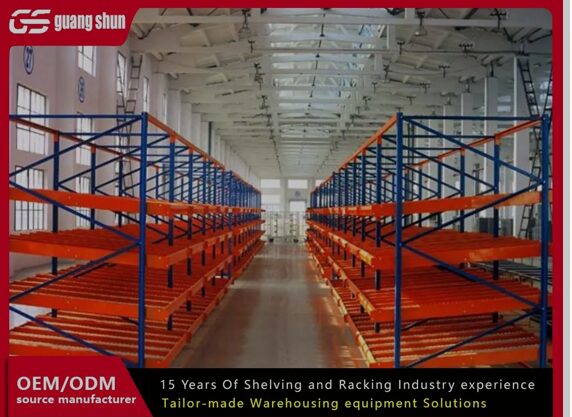
A well-designed Mezzanine Racking system is one of the most effective ways to increase warehouse storage capacity without the need for physical expansion. As businesses grow, storage demands rise, and available floor space often becomes limited. Mezzanine racking offers an intelligent solution by utilizing unused vertical space, creating additional floors or platforms above the existing warehouse area. These elevated levels can be used for storage, workstations, or even office spaces—helping businesses make the most of their existing premises.
Modern warehouses require flexibility, efficiency, and scalability, and that’s exactly what Mezzanine Racking provides. It transforms underutilized overhead space into valuable functional areas, allowing for easy reconfiguration based on future operational needs. This makes it a popular choice among industries such as logistics, manufacturing, retail, and e-commerce, where space optimization and productivity are top priorities.
What Is Mezzanine Racking?
Mezzanine Racking is a semi-permanent steel structure built above the main warehouse floor. It consists of a platform supported by strong steel columns, allowing an extra level to be created within the same vertical space. This additional floor can hold shelving systems, pallet racks, or workstations, depending on operational requirements.
The system is fully customizable and can be designed to handle various load capacities—from lightweight goods to heavy industrial materials. Mezzanine racks are typically built using modular components, which means they can be easily installed, modified, or relocated as business needs evolve.
Key Benefits of Mezzanine Racking
- Maximizes Space Utilization:
Mezzanine racking effectively doubles or even triples usable space without expanding the warehouse footprint. It makes full use of a building’s vertical height, which is often left unused. - Cost-Effective Expansion:
Instead of investing in new construction or renting additional facilities, businesses can increase storage capacity at a fraction of the cost. - Customizable Design:
The system can be tailored to fit any warehouse layout and integrated with stairs, handrails, conveyors, and lifts for safe and easy access. - Versatile Usage:
Mezzanines can be used for multiple purposes—storage, assembly, packaging, or administrative offices—depending on business needs. - Durability and Safety:
Built from high-strength steel, mezzanine racking systems are designed to support heavy loads while meeting international safety standards. - Scalability:
The modular nature of mezzanine systems allows easy reconfiguration or expansion as operational requirements grow.
Types of Mezzanine Racking Systems
There are several types of Mezzanine Racking systems available, depending on specific warehouse requirements:
- Rack-Supported Mezzanine: Uses existing pallet racking structures as support for the mezzanine floor, providing both shelving and elevated storage in one system.
- Free-Standing Mezzanine: Independent of existing racking, it can be built anywhere in the warehouse and is ideal for heavy-duty storage or office space.
- Shelving-Supported Mezzanine: Integrates shelving units as the structural support, perfect for storing smaller items or manual picking operations.
- Multi-Tier Mezzanine: Involves multiple floors stacked vertically, offering maximum storage density in high-ceiling warehouses.
Each type can be customized with specific flooring options—such as steel grating, wood, or perforated panels—to meet safety and operational requirements.
Choosing the Right Mezzanine Racking System
Selecting the right Mezzanine Racking system depends on several factors, including:
- Ceiling height and floor load capacity.
- Type and weight of goods stored.
- Intended purpose (storage, office, production area).
- Accessibility and safety features required.
- Potential for future expansion.
It’s recommended to work with a professional supplier who can assess your warehouse and design a solution that fits your operational flow, compliance standards, and budget.
Applications of Mezzanine Racking
Mezzanine racking is used across a wide range of industries:
- Warehousing and Logistics: For additional pallet storage and sorting areas.
- Manufacturing: To create assembly or quality-check stations above existing production floors.
- Retail and E-commerce: For inventory storage or packaging zones.
- Automotive and Spare Parts: For organized storage of heavy mechanical components.
Conclusion
Mezzanine Racking offers a smart, cost-effective, and scalable solution for businesses seeking to maximize their warehouse efficiency. By taking advantage of vertical space, companies can double their usable area without the expense of relocation or construction. Its flexibility, strength, and customization options make it suitable for virtually any industry. Investing in a mezzanine racking system not only enhances storage capacity but also future-proofs your warehouse for growth and evolving operational needs.